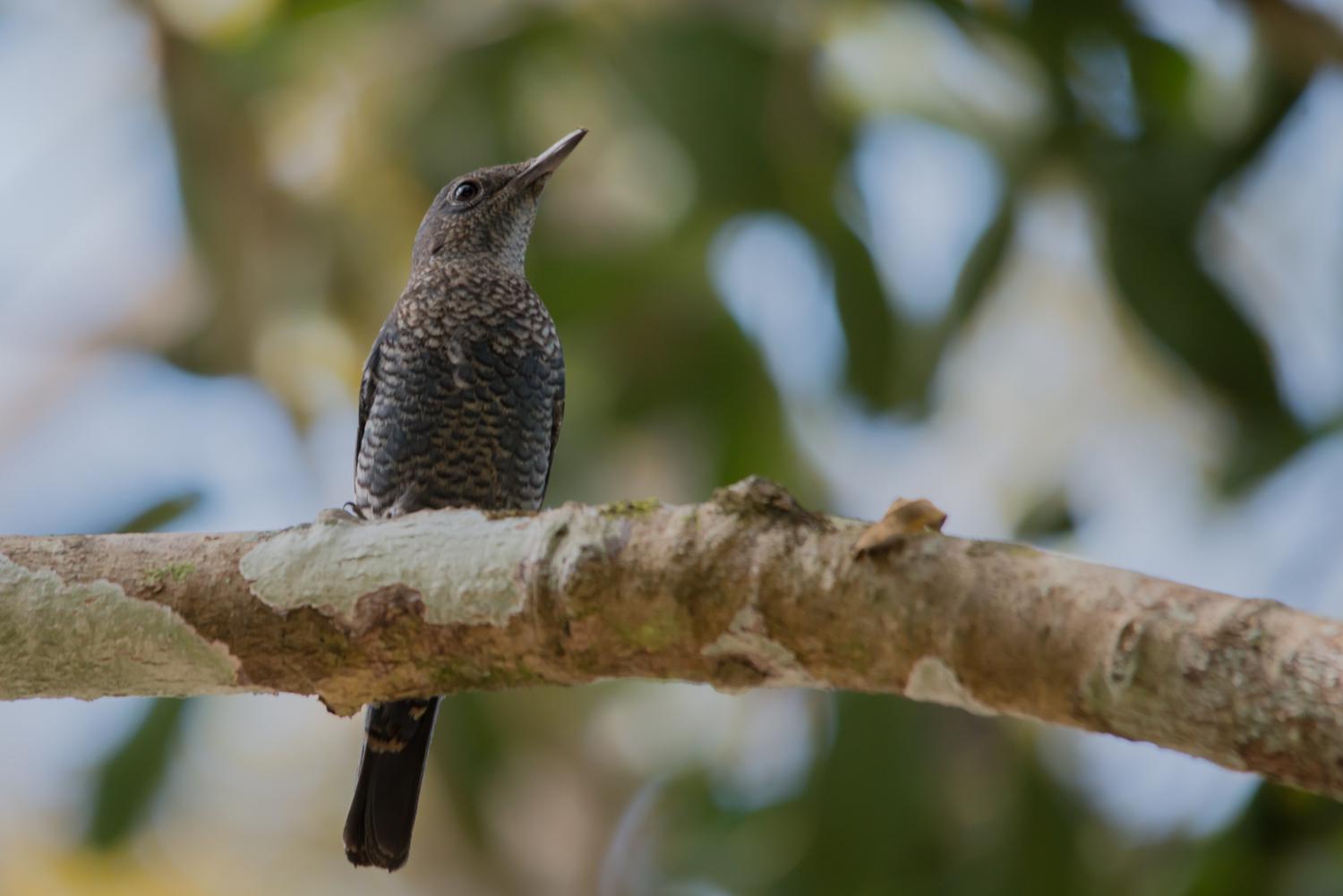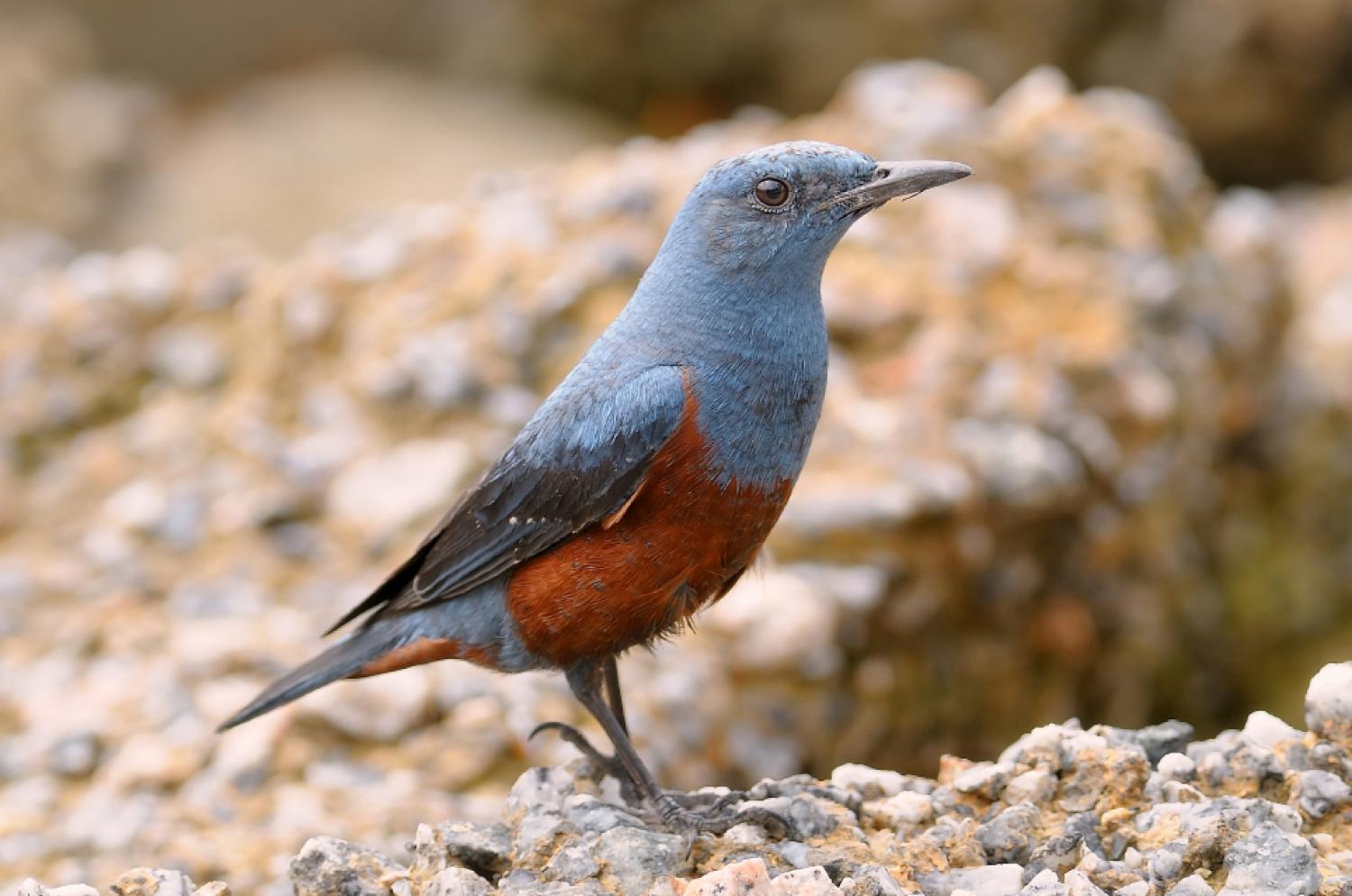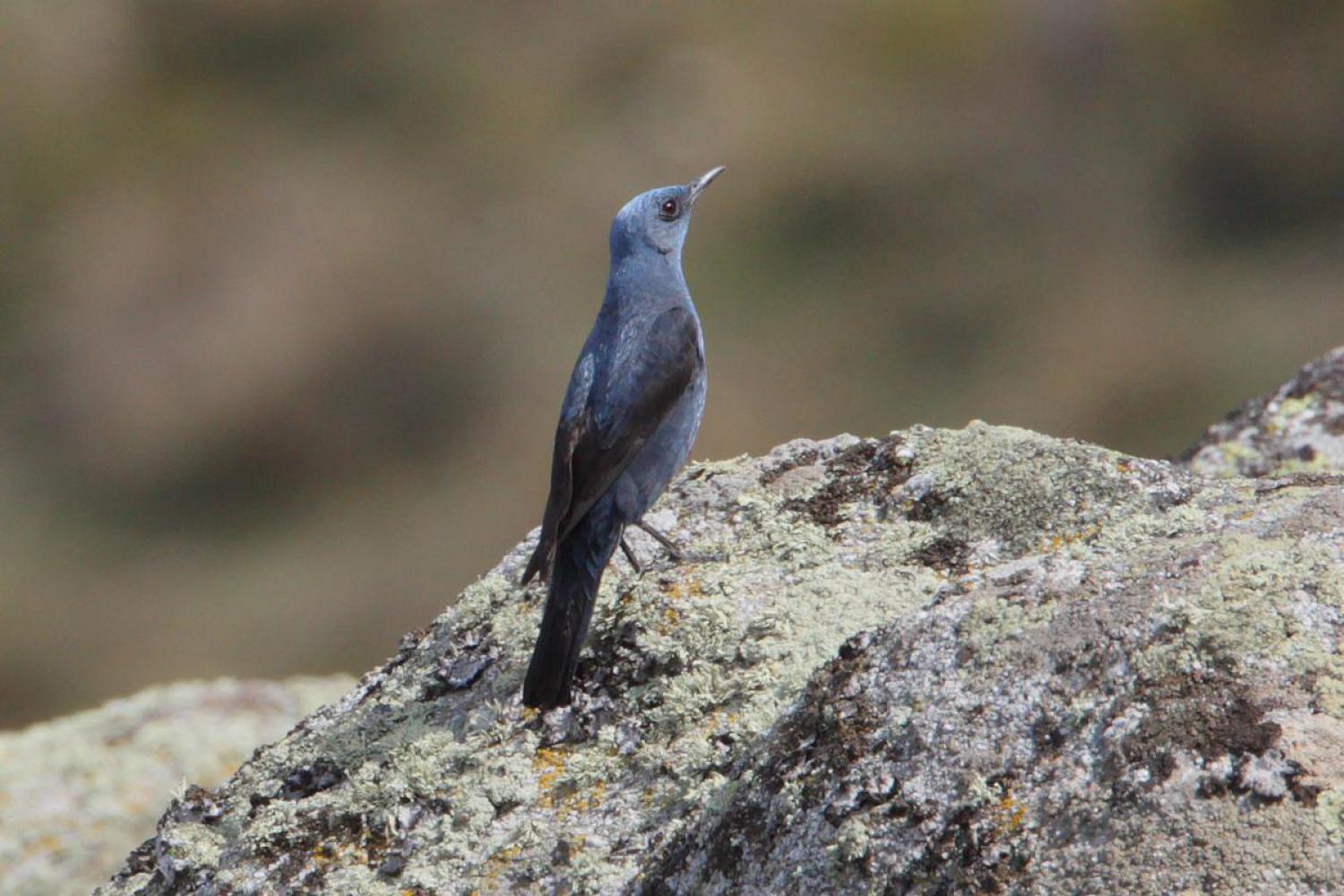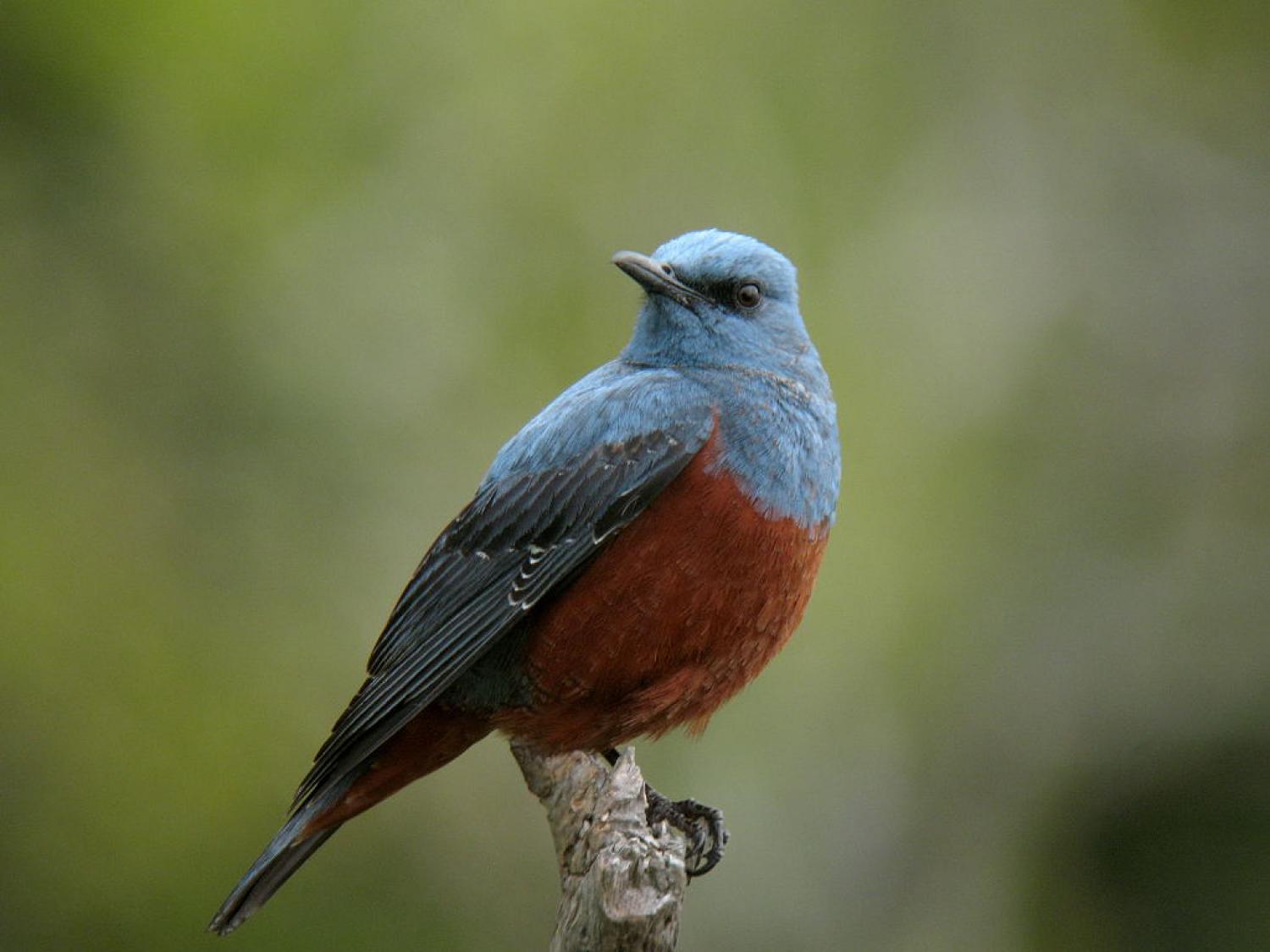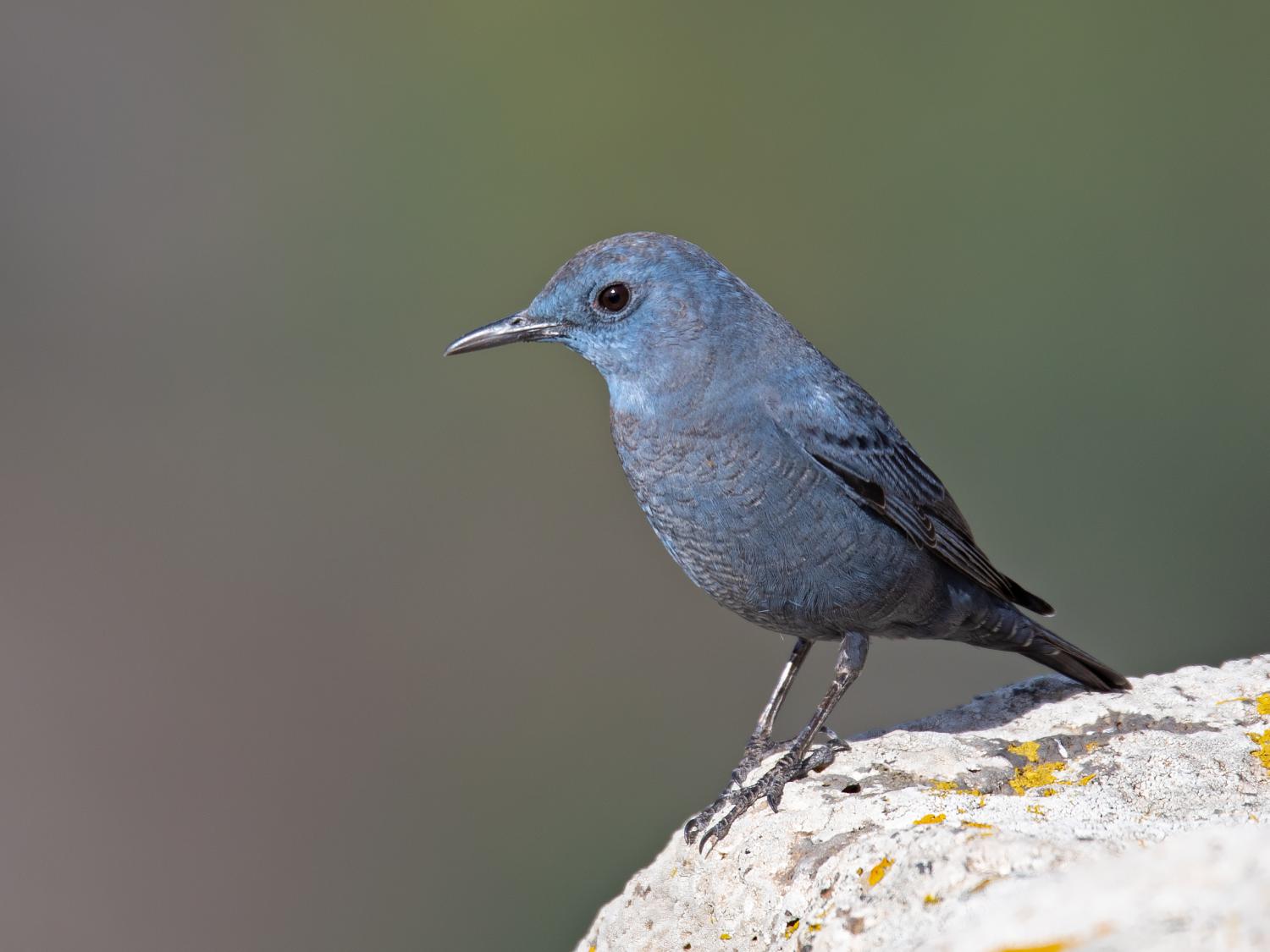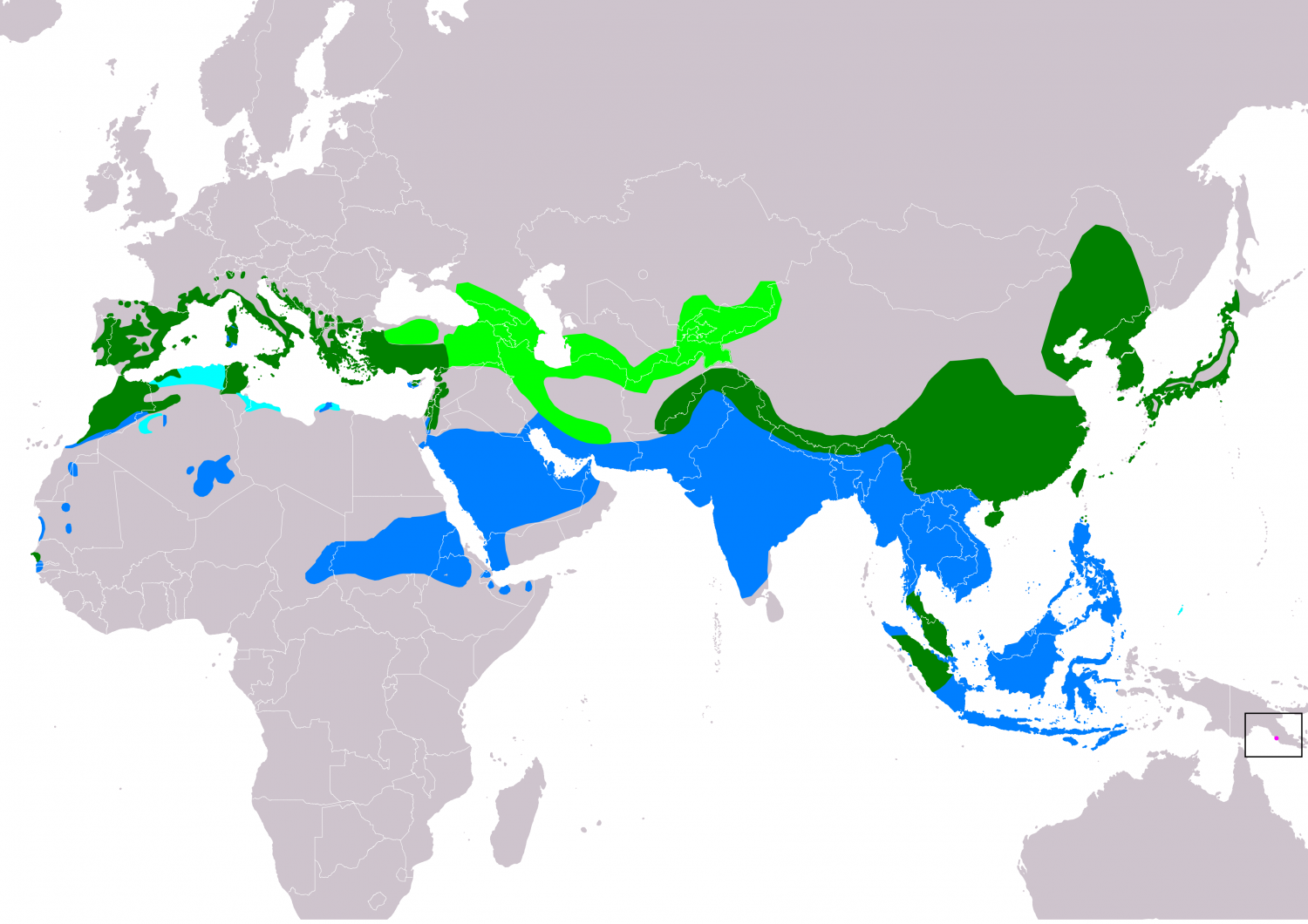Species of Thailand
Blue rockthrush
Monticola solitarius
Carolus Linnaeus, 1758
In Thai: นกกระเบื้องผา
The blue rock thrush (Monticola solitarius) is a species of chat. This thrush-like Old World flycatcher was formerly placed in the family Turdidae. It breeds in southern Europe, northwest Africa, and from Central Asia to northern China and Malaysia. The blue rock thrush is the official national bird of Malta and was shown on the Lm 1 coins that were part of the country's former currency.
Taxonomy
The blue rock thrush was described by Carl Linnaeus in 1758 in the 10th edition of his Systema Naturae under the binomial name Turdus solitarius. The scientific name is from Latin. Monticola is from mons, montis "mountain", and colere, "to dwell", and the specific epithet solitarius means "solitary".
The rock thrush genus Monticola was formerly placed in the family Turdidae but molecular phylogenetic studies have shown that the species in the genus are more closely related to members of the Old World flycatcher family Muscicapidae.
There are five recognised subspecies:
- M. s. solitarius (Linnaeus, 1758) – northwest Africa, south Europe, north Turkey to Georgia and Azerbaijan.
- M. s. longirostris (Blyth, 1847) – Greece and west and south Turkey through the Middle East to the northwest Himalayas to northeast Africa and India
- M. s. pandoo (Sykes, 1832) – central Himalayas to east China and north Vietnam to Greater Sunda Islands
- M. s. philippensis (Statius Müller, 1776) – east Mongolia to Sakhalin south to Japan, extreme north Philippines and northeast China to Indonesia
- M. s. madoci Chasen, 1940 – Malay Peninsula and north Sumatra
There is a proposal to split Monticola solitarius into two species: a western taxon comprising M. s. solitarius and M. s. longirostris and an eastern taxon with M. s. philippensis, M. s. pandoo and M. s. madoci.
Description
The blue rock thrush is a starling-sized bird, 21 – 23 cm in length with a long slim bill. The breeding male of the nominate subspecies is unmistakable, with all blue-grey plumage apart from its darker wings. Females and immatures are much less striking, with dark brown upperparts, and paler brown scaly underparts. The male of the subspecies M. s. philippensis has rufous-chestnut plumage from the mid-breast down to the undertail. Both sexes lack the reddish outer tail feathers of rock thrush.
The male blue rock thrush sings a clear, melodious call that is similar to, but louder than the call of the rock thrush.
Distribution and habitat
The European, north African and southeast Asian birds are mainly resident, apart from altitudinal movements. Other Asian populations are more migratory, wintering in sub-Saharan Africa, India and southeast Asia. This bird is a very uncommon visitor to northern and western Europe.
Behaviour
Blue rock thrush breeds in open mountainous areas. It nests in rock cavities and walls, and usually lays 3-5 eggs. An omnivore, the blue rock thrush eats a wide variety of insects and small reptiles in addition to berries and seeds.
This article uses material from Wikipedia released under the Creative Commons Attribution-Share-Alike Licence 3.0. Eventual photos shown in this page may or may not be from Wikipedia, please see the license details for photos in photo by-lines.
Category / Seasonal Status
Wiki listed status (concerning Thai population): Resident (ssp madoci) in far south and winter visitor
BCST Category: Recorded in an apparently wild state within the last 50 years
BCST Seasonal statuses:
- Non-breeding visitor
- Resident or presumed resident
Scientific classification
- Kingdom
- Animalia
- Phylum
- Chordata
- Class
- Aves
- Order
- Passeriformes
- Family
- Muscicapidae
- Genus
- Monticola
- Species
- Monticola solitarius
Common names
- English: Blue rock thrush
- Thai: นกกระเบื้องผา
Synonyms
- Turdus solitarius, Carolus Linnaeus (1758)
Conservation status

Least Concern (IUCN3.1)
Photos
Please help us review the bird photos if wrong ones are used. We can be reached via our contact us page.
Range Map
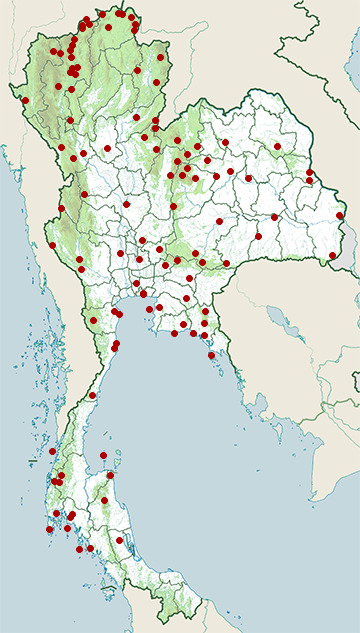
- Ang Thong National Marine Park
- Ao Phang-Nga National Park
- Bang Pu Recreation Centre
- Bang Saphan Noi District, Prachuap Khiri Khan
- Bangkok Province
- Bueng Boraped Non-Hunting Area
- Chat Trakan Waterfall National Park
- Chiang Dao District, Chiang Mai
- Chiang Dao Wildlife Sanctuary
- Chiang Khong District, Chiang Rai
- Chiang Saen District, Chiang Rai
- Doi Inthanon National Park
- Doi Lang
- Doi Pha Hom Pok National Park
- Doi Phu Kha National Park
- Doi Suthep - Pui National Park
- Erawan National Park
- Fang District, Chiang Mai
- Hat Chao Mai National Park
- Huai Nam Dang National Park
- Kabin Buri District, Prachinburi
- Kaeng Khoi District, Saraburi
- Kaeng Krachan National Park
- Kantharawichai District, Maha Sarakham
- Kaset Sombun District, Chaiyaphum
- Khanom District, Nakhon Si Thammarat
- Khao Khitchakut National Park
- Khao Laem Ya - Mu Ko Samet National Park
- Khao Luang National Park
- Khao Phanom Bencha National Park
- Khao Sam Roi Yot National Park
- Khao Soi Dao Wildlife Sanctuary
- Khao Sok National Park
- Khao Yai National Park
- Khlong Saeng Wildlife Sanctuary
- Khon San District, Chaiyaphum
- Khun Phawo National Park
- Khung Kraben Non-Hunting Area
- Klaeng District, Rayong
- Ko Chang National Park
- Ko Lanta National Park
- Ko Phayam
- Ko Sichang District, Chonburi
- Laem Pak Bia
- Lam Nam Nan National Park
- Mae Ai District, Chiang Mai
- Mae Charim National Park
- Mae Fa Luang District, Chiang Rai
- Mae Ping National Park
- Mae Rim District, Chiang Mai
- Mae Taeng District, Chiang Mai
- Mae Wong National Park
- Mueang Chiang Mai District, Chiang Mai
- Mueang Chiang Rai District, Chiang Rai
- Mueang Khon Kaen District, Khon Kaen
- Mueang Krabi District, Krabi
- Mueang Lopburi District, Lopburi
- Mueang Nakhon Nayok District, Nakhon Nayok
- Mueang Phatthalung District, Phatthalung
- Mueang Phetchaburi District, Phetchaburi
- Mueang Phuket District, Phuket
- Mueang Sukhothai District, Sukhothai
- Mueang Suphanburi District, Suphan Buri
- Mueang Surin District, Surin
- Mueang Tak District, Tak
- Nam Nao National Park
- Nam Phong National Park
- Namtok Phlio National Park
- Nanthaburi National Park
- Non Din Daeng District, Buriram
- Nong Bong Khai Non-Hunting Area
- Pa Sang District, Lamphun
- Pai District, Mae Hong Son
- Pha Daeng National Park
- Pha Hin Ngam National Park
- Pha Khao District, Loei
- Pha Taem National Park
- Phi Phi Islands
- Phimai District, Nakhon Ratchasima
- Phra Nakhon Si Ayutthaya District, Phra Nakhon Si Ayutthaya
- Phu Chi Fa Forest Park
- Phu Chong Na Yoi National Park
- Phu Foi Lom National Park
- Phu Hin Rong Kla National Park
- Phu Khiao Wildlife Sanctuary
- Phu Kradueng National Park
- Phu Luang Wildlife Sanctuary
- Phu Pha Thoep National Park
- Phu Phan National Park
- Phu Sa Dok Bua National Park
- Phu Soi Dao National Park
- Phu Suan Sai National Park
- Phu Wiang National Park
- Rattanaburi District, Surin
- Sai Yok District, Kanchanaburi
- Sakaerat Environmental Research Station
- Salawin National Park
- Samut Prakan Province
- San Sai District, Chiang Mai
- Si Racha District, Chonburi
- Sri Phang Nga National Park
- Taksin Maharat National Park
- Tat Mok National Park
- Tha Takiap District, Chachoengsao
- Thao Kosa Forest Park
- Thap Lan National Park
- Thong Pha Phum National Park
- Thung Yai Naresuan Wildlife Sanctuary
- Wiang Kaen District, Chiang Rai
